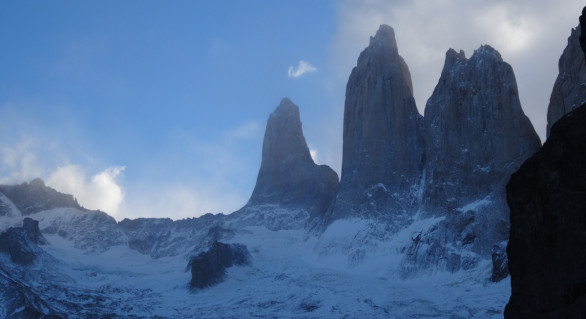
Patagonia, a vast and sparsely populated area (almost the same size as British Columbia), is located on the southern tip of South America, and is home to a dizzying array of breathtaking mountains, lakes, and glaciers. It extends into both Chile and Argentina, and owing to its remoteness and staggering beauty it is a remarkable place to experience true wilderness.
On our visit to the region in March 2014, we explored the Torres del Paine National Park in Chile and also spent time near the town of El Chalten, within the Los Glaciares National Park in Argentina. In this article we’ll focus on Chilean Patagonia, with the equally stunning Argentinian region covered here.
To reach Torres del Paine we travelled from Santiago to Punta Arenas by air, and then bussed to Puerto Natales, the gateway town to the national park. We based ourselves in Puerto Natales for a few days to gather information, complete our planning, and purchase supplies for our trek. We stayed at Erratic Rock, an extremely welcoming and comfortable hostel with friendly people, oodles of knowledge, gear rentals, and scrumptious breakfasts with homemade bread and peanut butter. The hostel also allows returning guests to store bags and other valuables while in the park. We rented sleeping bags and mats from the hostel, and purchased our cooking and eating equipment from a supply store in the town. We had already purchased a small two-person tent in Santiago after calculating that renting a tent for five days would cost more than purchasing one.
We planned a six day adventure in Torres del Paine, which would see us hike and run along the famous ‘W’ trek which remains just south of the Cordilerra del Paine massif. We initially planned to run the complete 110km ‘O’ circuit, which essentially circumnavigates the massif. Unfortunately we had to opt for a more conservative route, due to logistical difficulties exacerbated by cold weather challenges. So, out of necessity, we set out to complete the ‘W’, with plans to get in plenty of running on the gorgeous trails of this spectacular part of our planet. Over six days we completed the ‘W’ circuit – running more than half of it (a total of 40km or so) along with around 70km of “full pack” trekking with gear, food and camping equipment.
We started our adventure at Laguna Amarga, the main entrance to the park. Using the pay-for-use shuttle bus service, we drove the first 10km into the park and then hiked 9km uphill to Campamento Torres for our first night in the park, encountering heavy winds and snow along the way. Campamento Torres is one of two free campsites along the ‘W’ in the park. We set up camp, and set off for our first short run up to the Base de las Torres, where we were treated to a private audience with the splendid granite spires that give the park its name (torres is Spanish for towers). This area is usually congested, and most trekkers arrive for sunrise or later in the evening owing to the logistics of how people move along the hiking routes. We arrived early and had a good 20 minutes in absolute silence to enjoy the company of this spectacular sight with a glorious sunset. An absolute highlight.
The following morning we did the 9km hike back down to the campground Camping Las Torres near Refugio Torres from where we had planned a longer run north east towards Campamento Seron on what is known as the “back” of the ‘O’ circuit. The weather, however, was steadily deteriorating and before long we cut our planned two-hour run short, returning back to our tent after an hour in the now howling wind. It was beginning to dawn on us that wind was going to be a big part of our Torres del Paine experience. Notwithstanding the shortened run, it was still a gorgeous, non- technical single-track trail, which offered wide, sweeping views of open landscape in this part of the park.
That night the wind continued to gain strength, really whipping our tent around, and the following day turned out to be a write-off. It started raining, the wind was howling, and we had little choice but to stay bundled up in our tent for most of the day. We were thus forced to spend another night at Camping Las Torres. We learned later that the winds were at a sustained 70 to 80km/h, a strong gale, according to the Beaufort Scale.
The next day dawned clear, but with no break in the wind. After breaking down camp we hiked the 11km to the next overnight camp, Los Cuernos. It was a beautiful hike, along the northern shore of the magnificent Lago (lake) Nordenskjold. We couldn’t wait to get into our running gear to take in a run along the lakeshore. It was stunning. Unfortunately it was also cold and windy, and with sunset fairly early, we only covered about 5km out before being forced to make our way back to camp where we had to find a way to get warm and make dinner. Dinner was easy in the shelter of the refugio, but it turned out that we wouldn’t be warm again until some time the next day. That night was well below zero, and with our lightweight gear we felt it!
The next morning we shook the ice off our tent, and set off to Refugio Paine Grande, a good 13km away. Along the way, we left our backpacks at Campamento Italiano and ran the 8km stretch up the “middle of the ‘W’” with the French Valley to our right and the magnificent Glacier del Frances to our left. This was a steep and technical run, offering gorgeous scenery, another major highlight. An out-and-back is required, though, due to the layout of the trail, giving a total of 16km before continuing on to Refugio Paine Grande, making this a rather long day with a total of 29km and a fair amount of climbing too with a total elevation gain of around 1,200m.
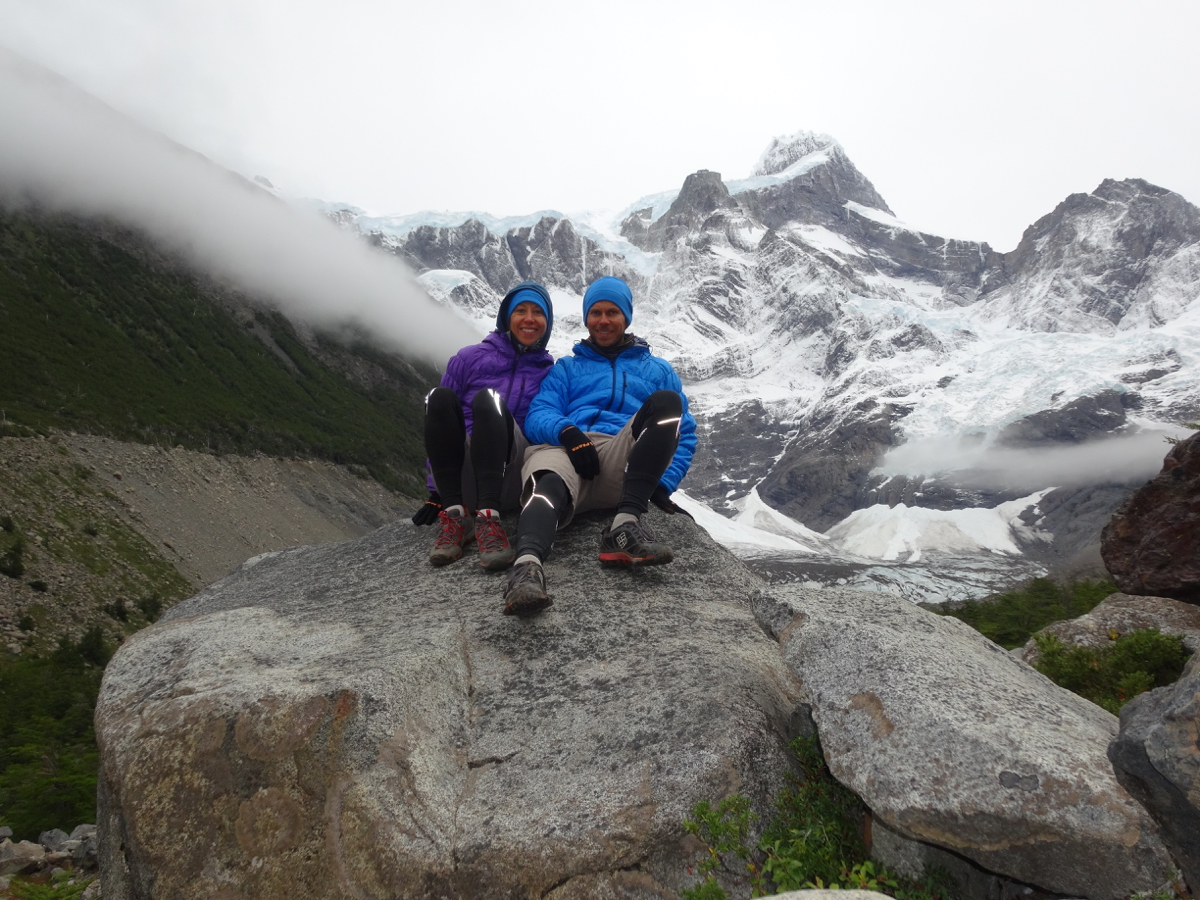
A special little rest on our 16-km out and back run up the French Valley with the breathtaking Glacier del Frances as our backdrop
We decided to spend the night in a dorm at Refugio Paine Grande instead of camping as we were very cold the previous night and the overnight weather forecast did not look good. Our sparse and expensive digs for the night was at least a little more luxurious and warmer than being in a tent!
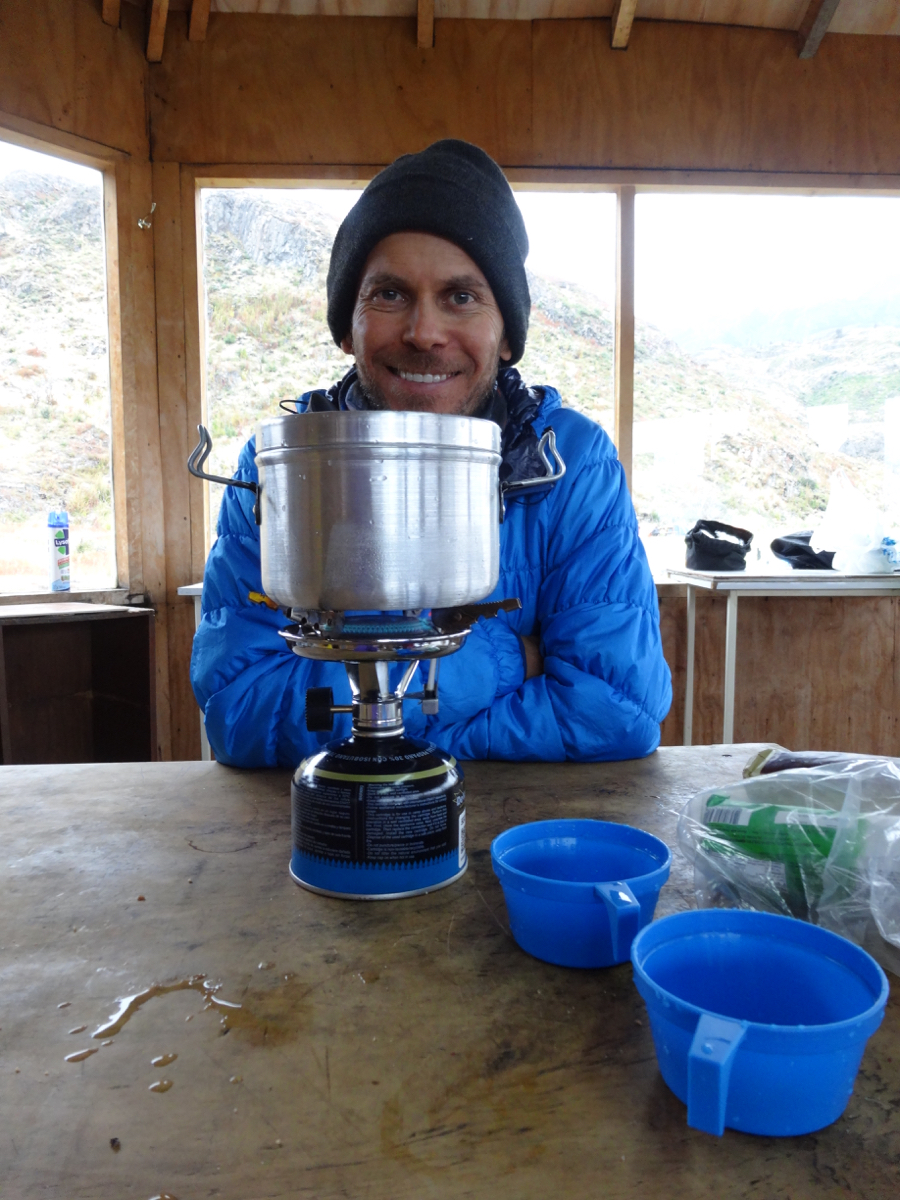
Our fantastic gas stove and versatile pot/kettle/serving dish in the communal kitchen at Refugio Paine Grande
The following day was our last day in the park and it was nothing short of spectacular. We put in a 24km out-and-back (just over 1,100m of elevation gain) as we ran up the left leg of the ‘W’ to just beyond Refugio Grey to take in the awesome Glacier Grey. Along the trail there were awesome views of Lago Grey with plenty of side options to reach higher ground for even more spectacular views. The trail was highly varied, all single-track, but ranging from easy, smooth running to highly technical, steep and rocky business. It was the perfect way to end our time in this most memorable place.
Upon returning to Refugio Paine Grande we caught the ferry across Lago Pehoe back to the park entrance. From here we bussed back to Puerto Natales, very happy to find a hot shower and cosy bed at Erratic Rock, the friendliest hostel we’d encountered on our travels thus far. And so we concluded one of our most memorable adventures with firm promises to return to explore more of this special place.
Overview
Expect unpredictable and extreme weather conditions especially strong winds and quickly changing temperatures.
Bring layers and a good wind/rain jacket along with gloves, hat, and neck covering.
Bring sunscreen and lip balm.
Best time to visit is October through March.
Puerto Natales is the gateway town for Torres del Paine National Park.
Access Puerto Natales by bus from Punta Arenas (easy and cheap) or ferry from Puerto Montt (difficult and expensive but worth the effort).
Regular buses run between Puerto Natales and the park; buy tickets at any travel agent in town or at the bus station (slightly cheaper).
Entrance fee for the park for foreigners is $18,000 chilean pesos (USD $38) in high season and $5,000 chilean pesos (USD $10.50) in low season; this is a one-time fee per visit regardless of how long you stay in the park.
The W circuit can be completed by starting from either the east or west end, and there are logistical facilities to support either starting/ending point. There are many online resources that offer suggestions for each route, but ultimately your plans will be dictated by weather (as we discovered!). Be flexible and arrive with a good understanding of the route and terrain and carry a map at all times!
Stock up on food and camping gear (purchase and rental) in Puerto Natales as supplies are very limited in the park.
Erratic Rock Backpackers/Basecamp Rentals in Puerto Natales is your best bet for warm hospitality, clean and cosy dorm beds and good rental gear (tell Bill we sent you and make sure you attend their free daily orientation for all the best info and tips).
Camping is the cheapest accommodation in the park with tent and gear rentals available at each refugio (hostel/lodge).
If camping with your own gear, bring a quality lightweight sleeping mat (the ground is hard and cold!) and sleeping bag rated below zero degrees.
Bring a thin rope and zippered canvas bag to store and winch up food when in camp – those Patagonian mice will wreak havoc on your food supply if it’s on the ground or in your pack in your tent!
There are non-camping accommodation options at the refugios that offer a bed as well as food. However, it’s not cheap at an average of US$55 p/person p/night in a 4 or 6 person dormitory, plus another US$20 to US$30 p/meal. The refugios are managed by two companies: Vertice and Fantastico Sur.
Communal kitchen, shower and toilet facilities are available at every refugio.
Links
www.torresdelpaine.com (general info and maps)
www.parquetorresdelpaine.cl/en/ (official park website)
www.verticepatagonia.com (camping and lodging in park)
www.fantasticosur.com (camping and lodging in park)
www.erraticrock.com (hostel and gear rental)
Organized races
www.ultratrailtorresdelpaine.com
www.patagonianinternationalmarathon.com


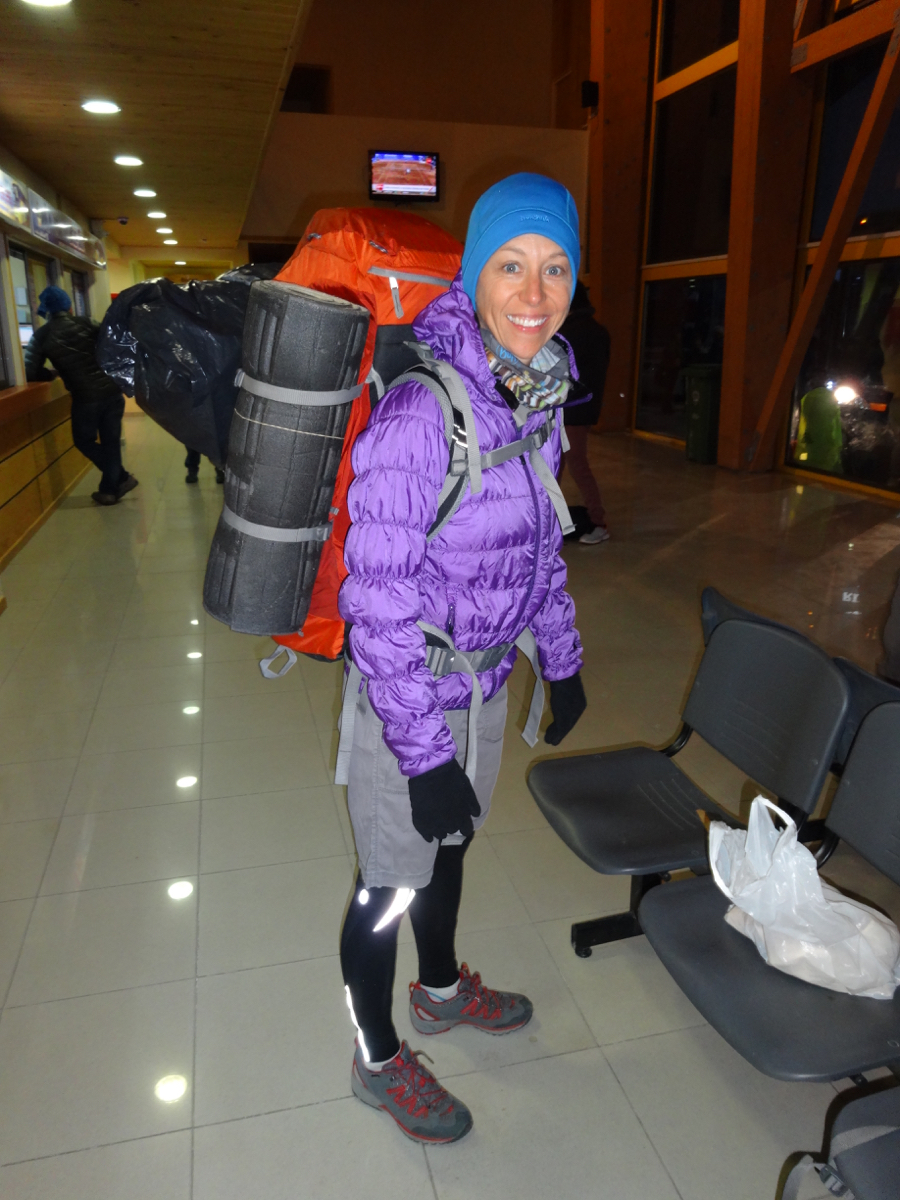
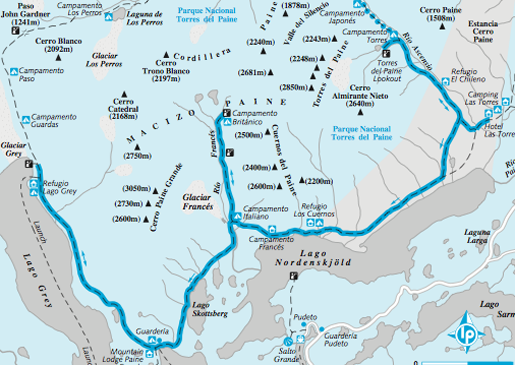
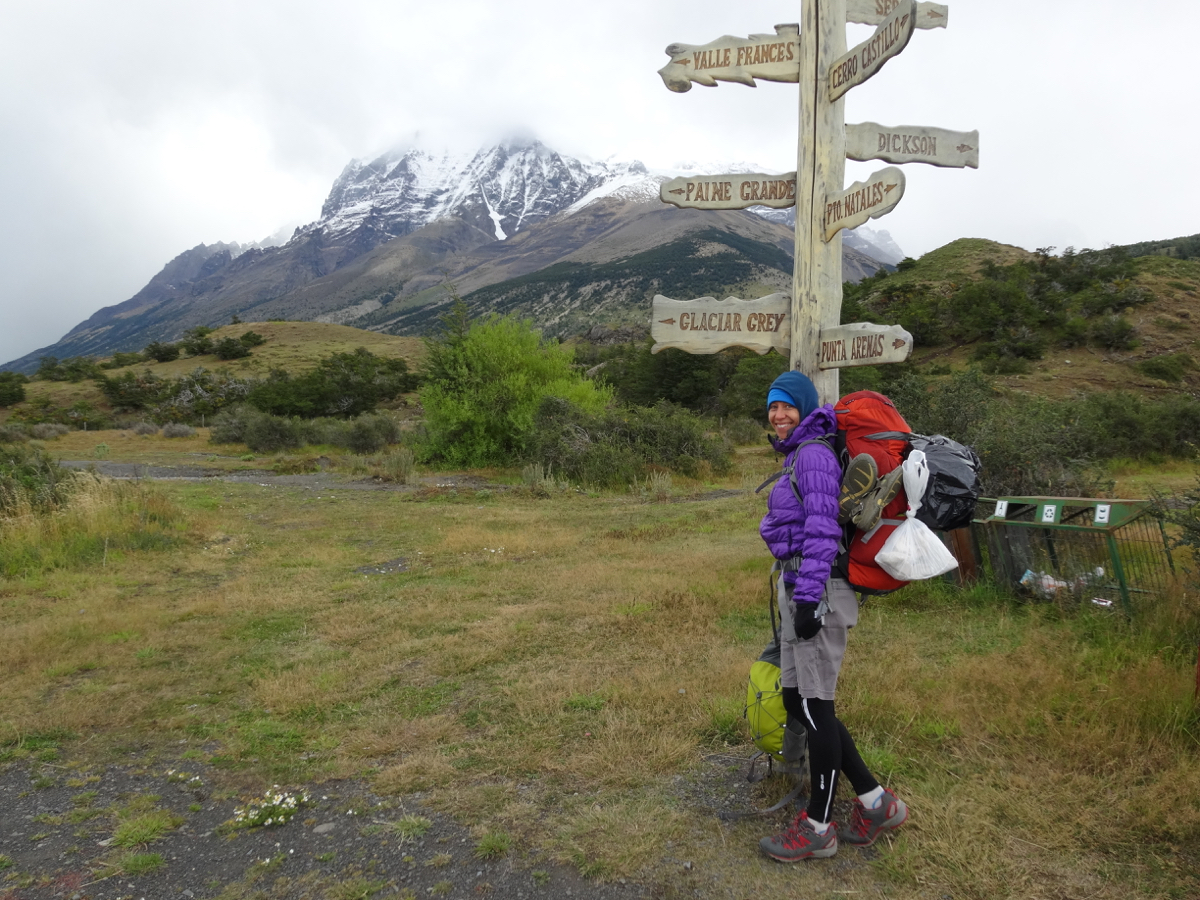
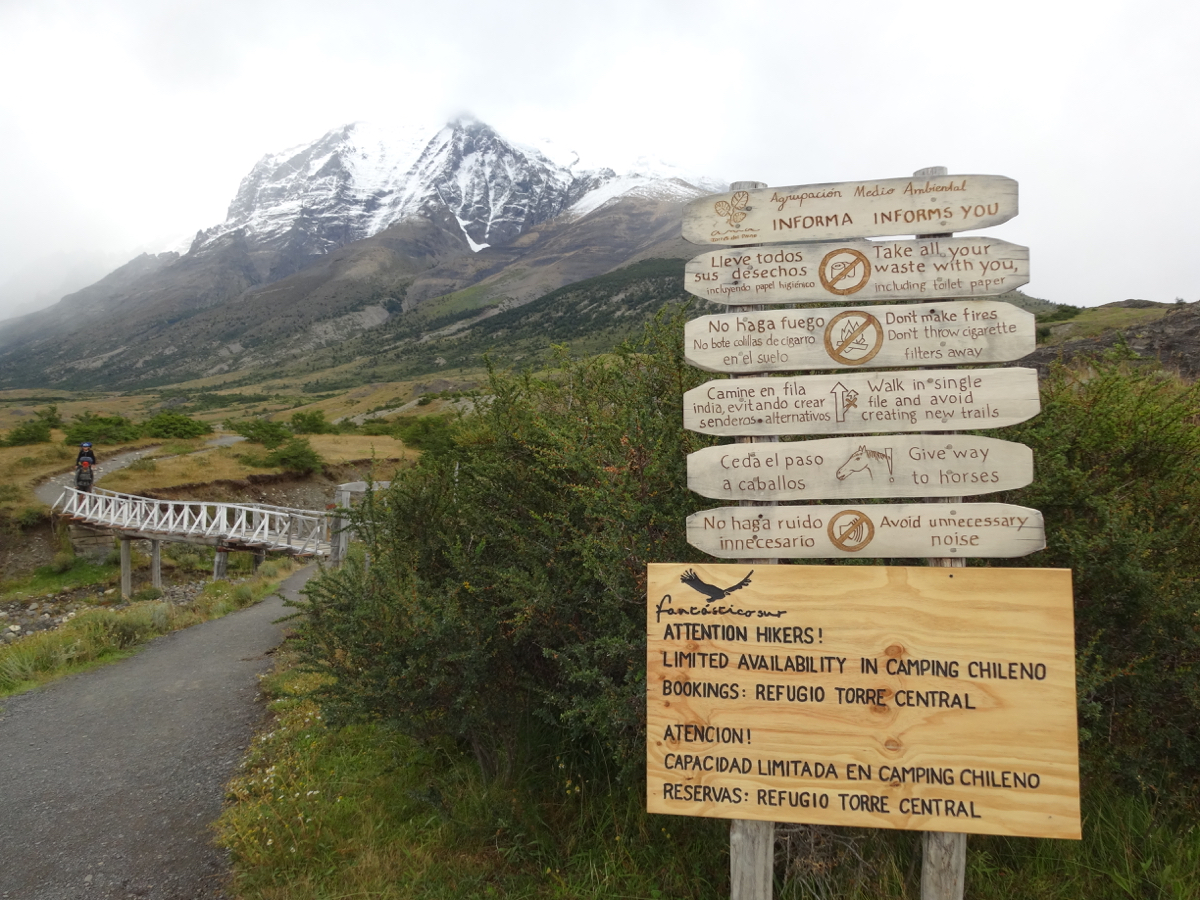


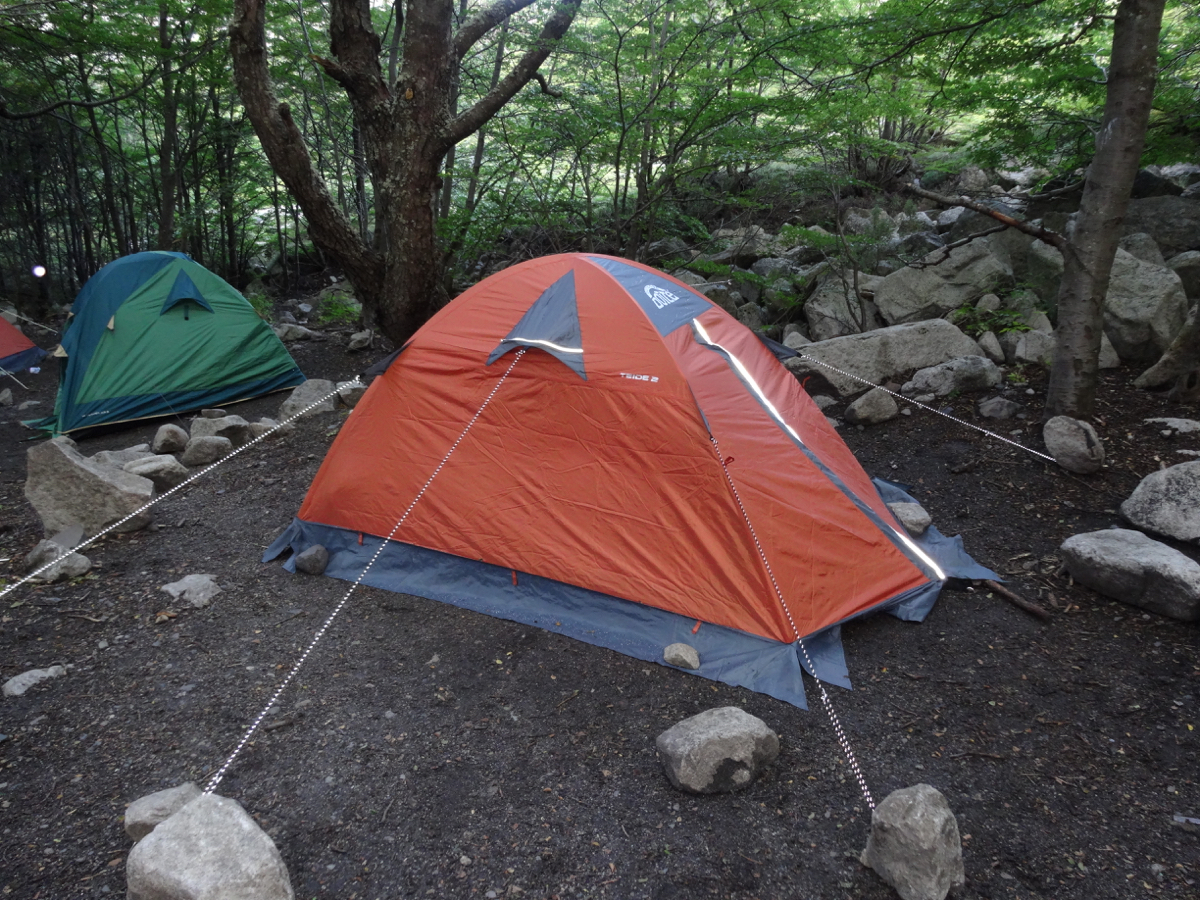





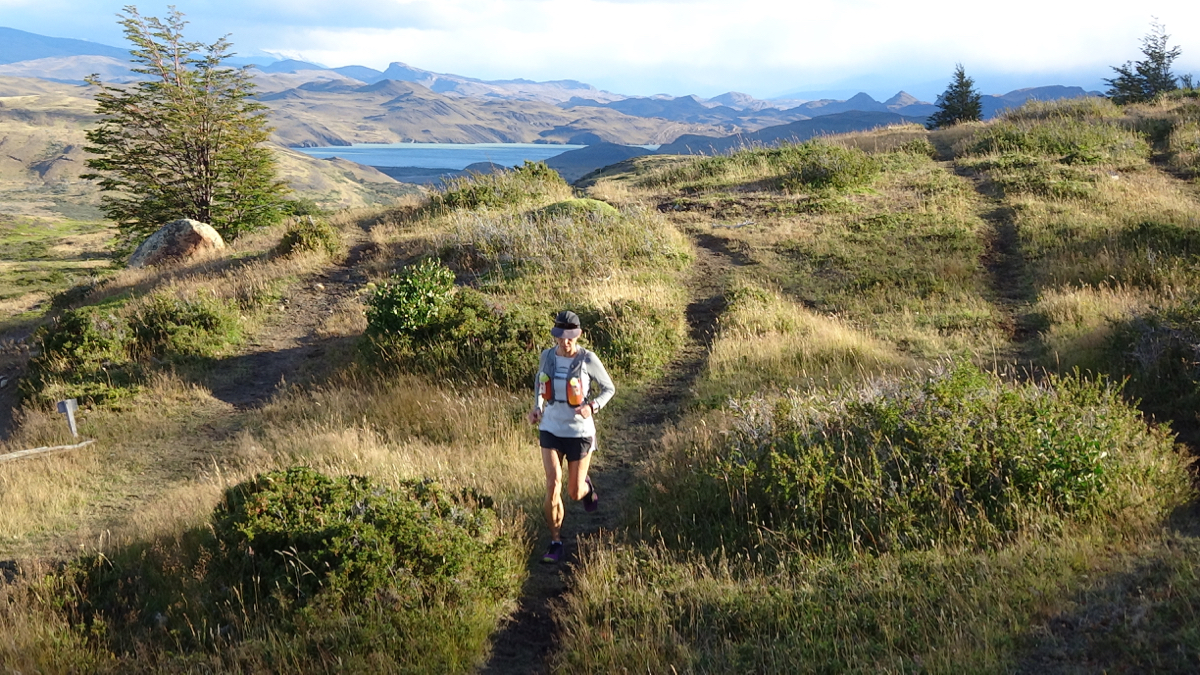
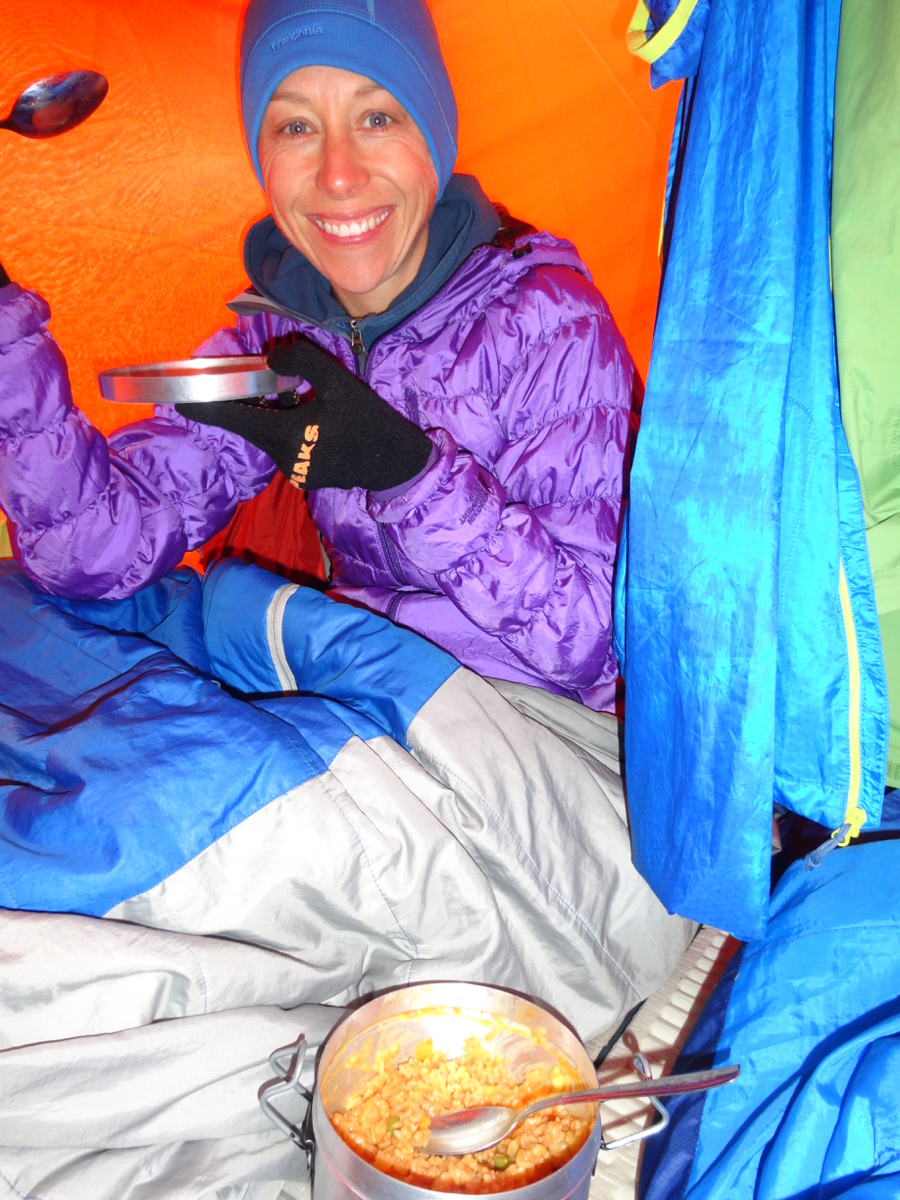
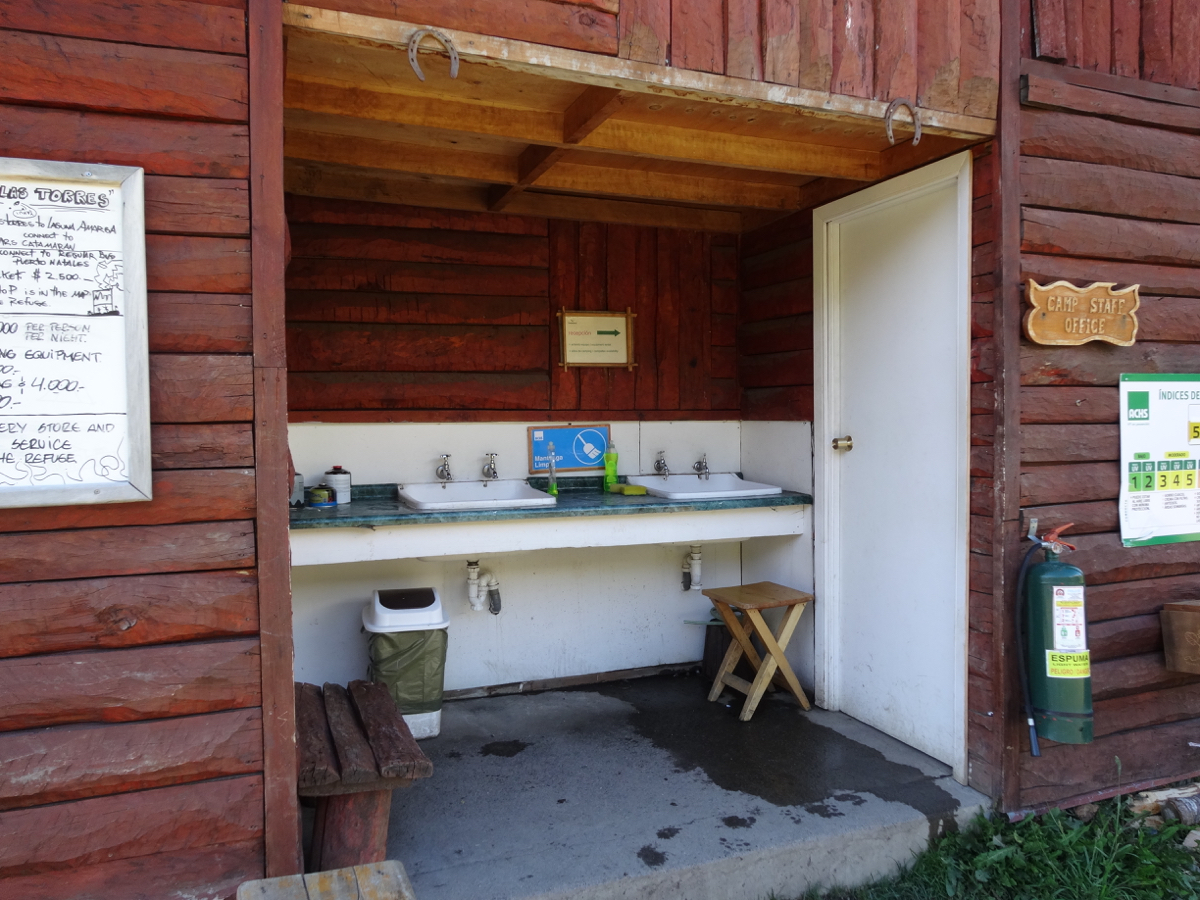
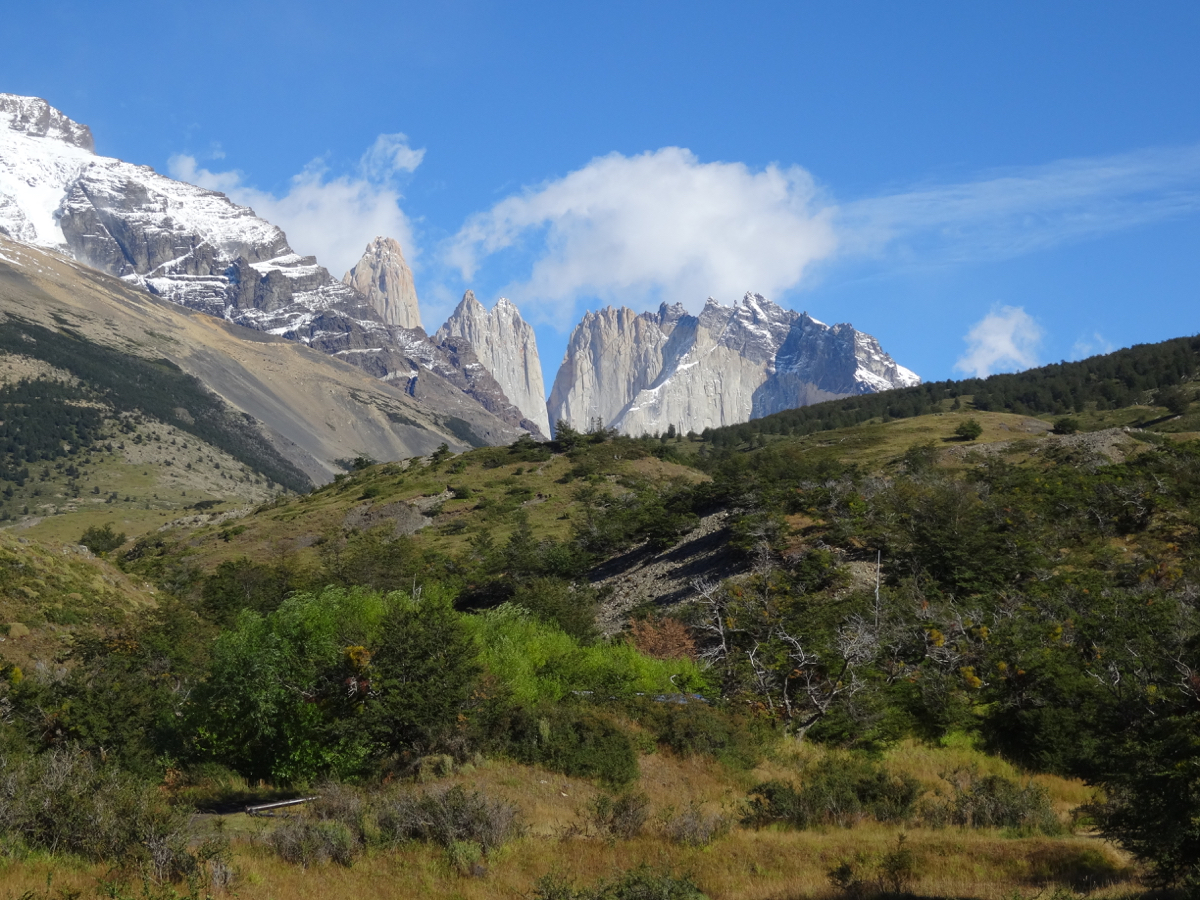

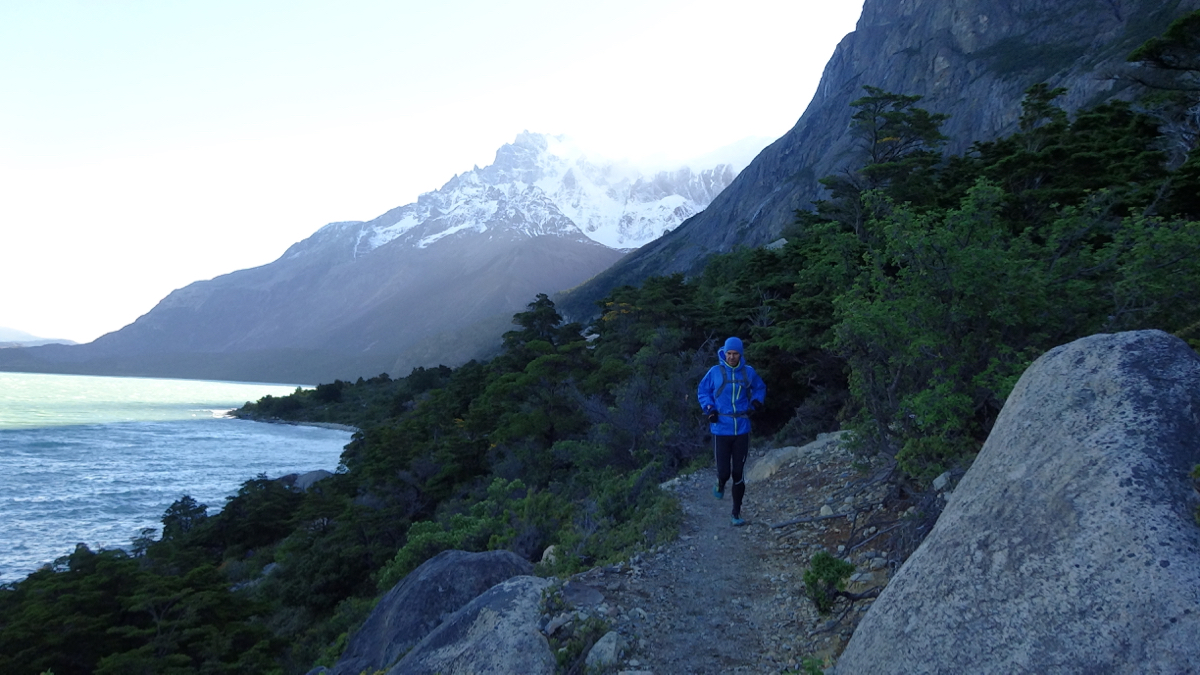
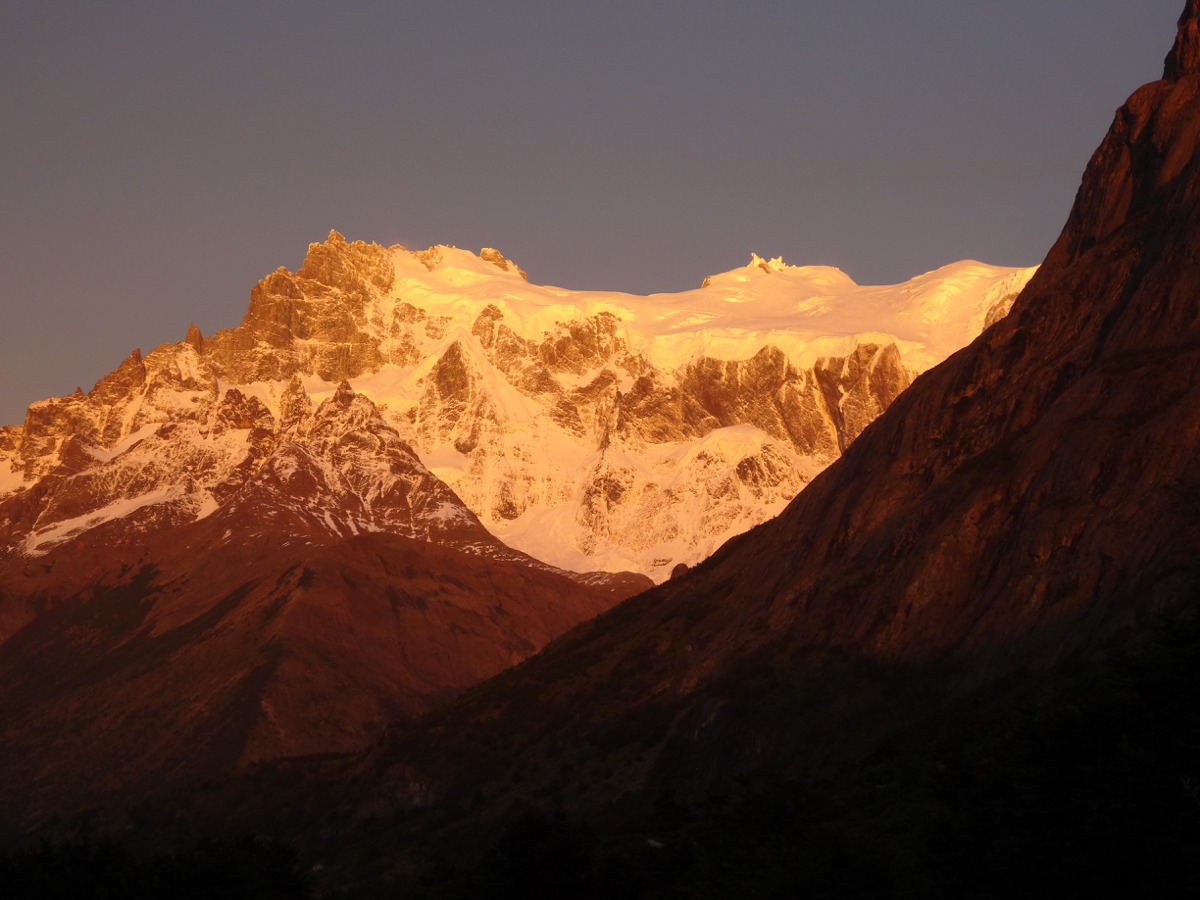


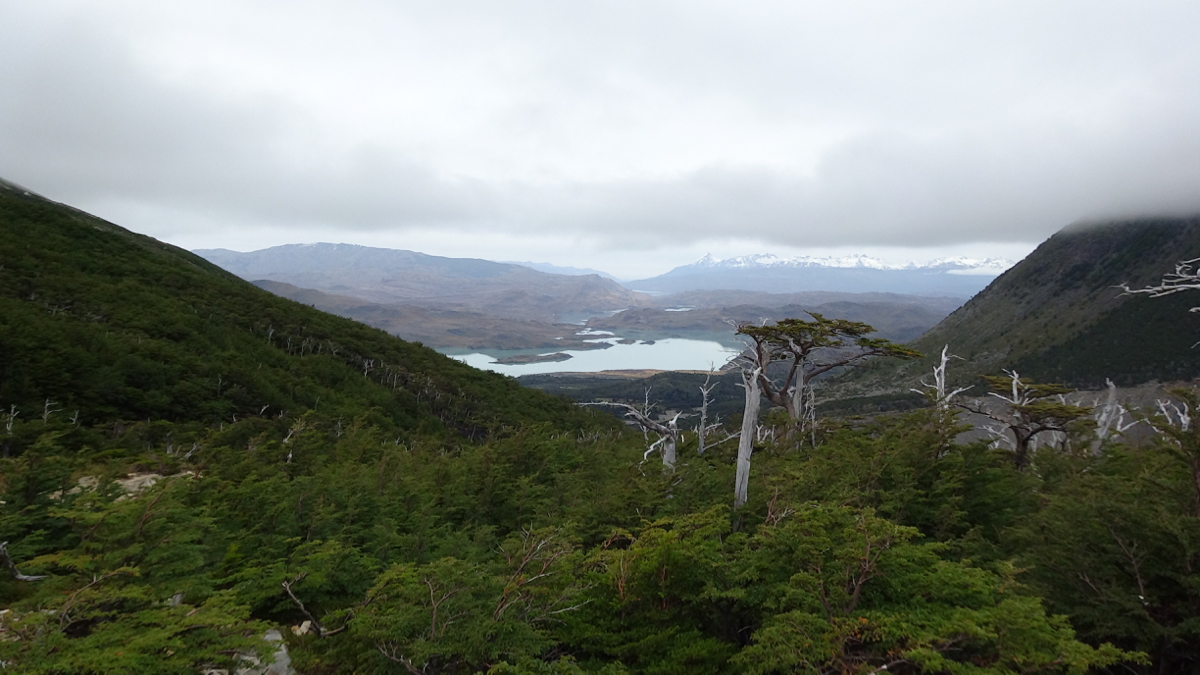


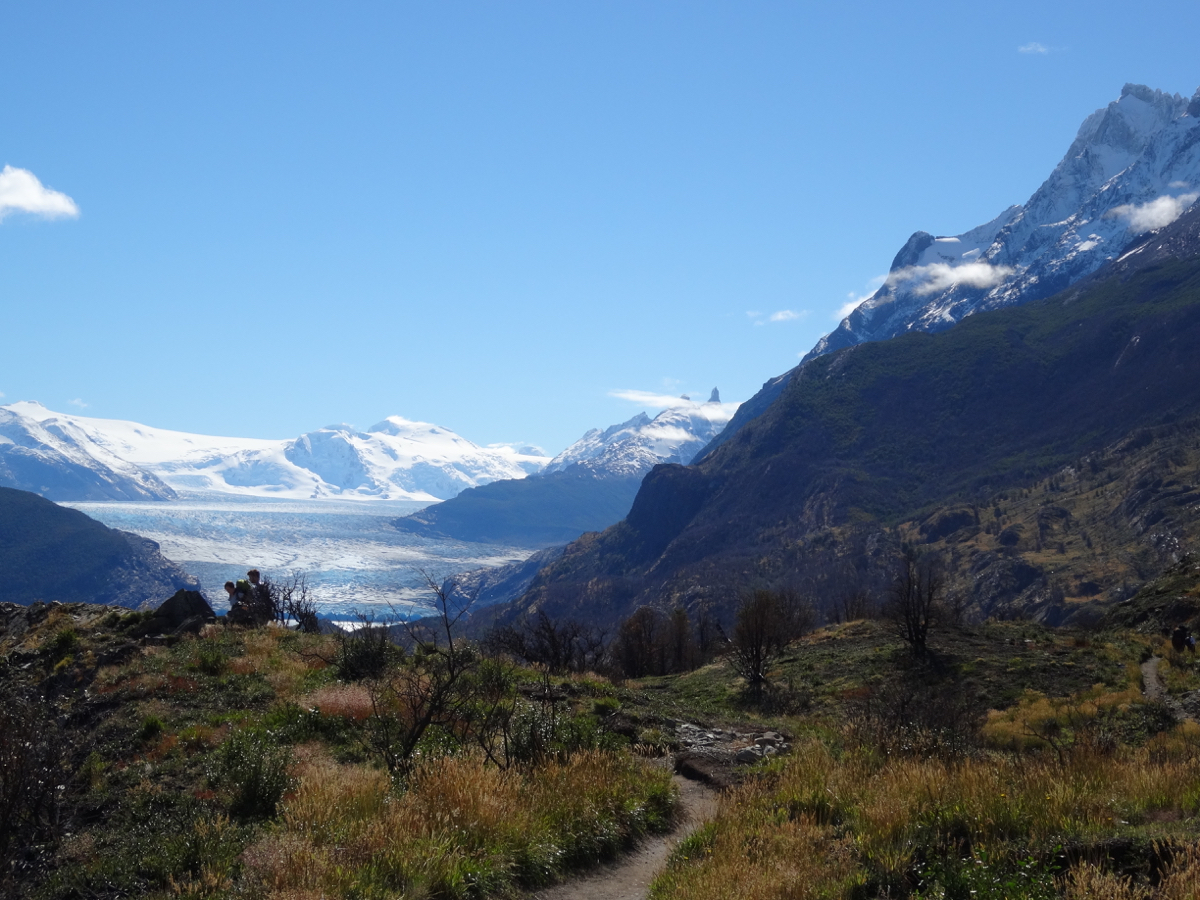

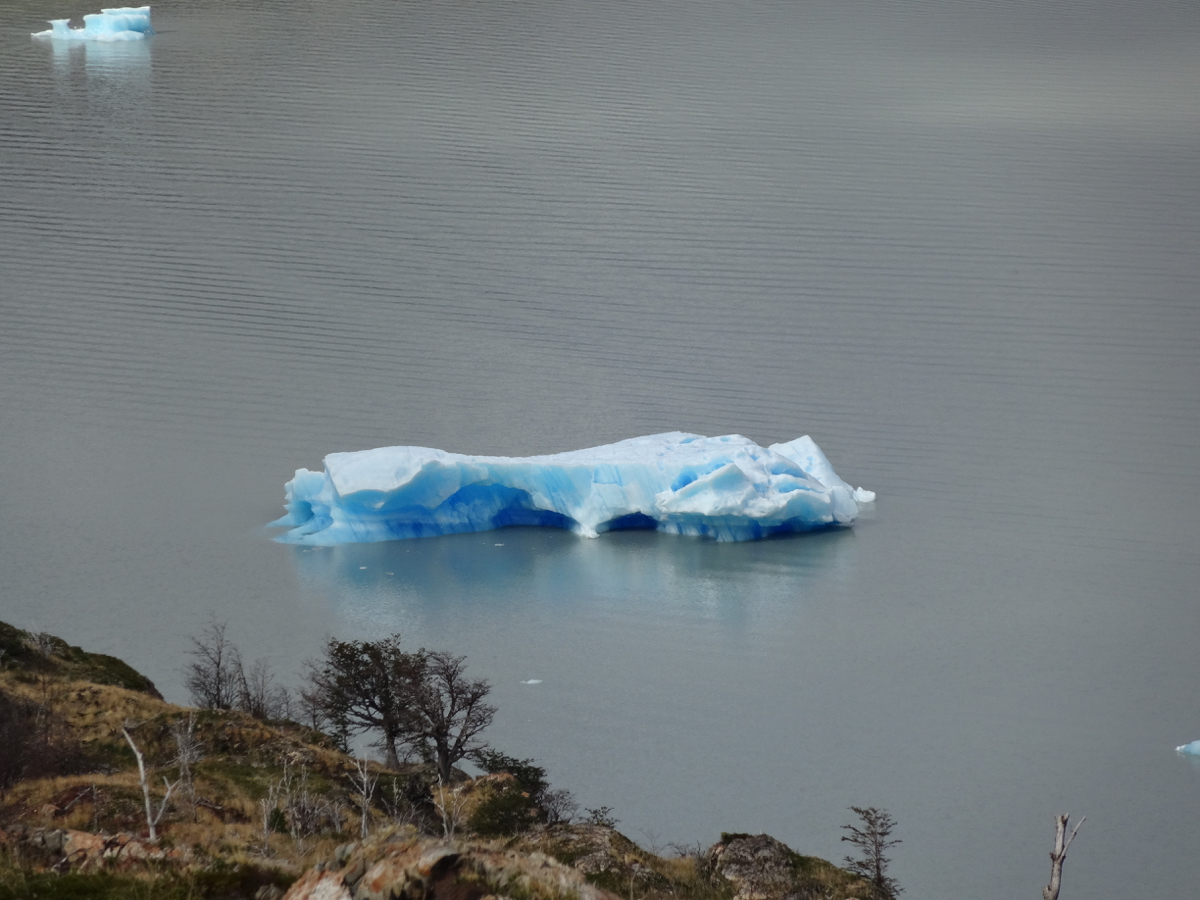
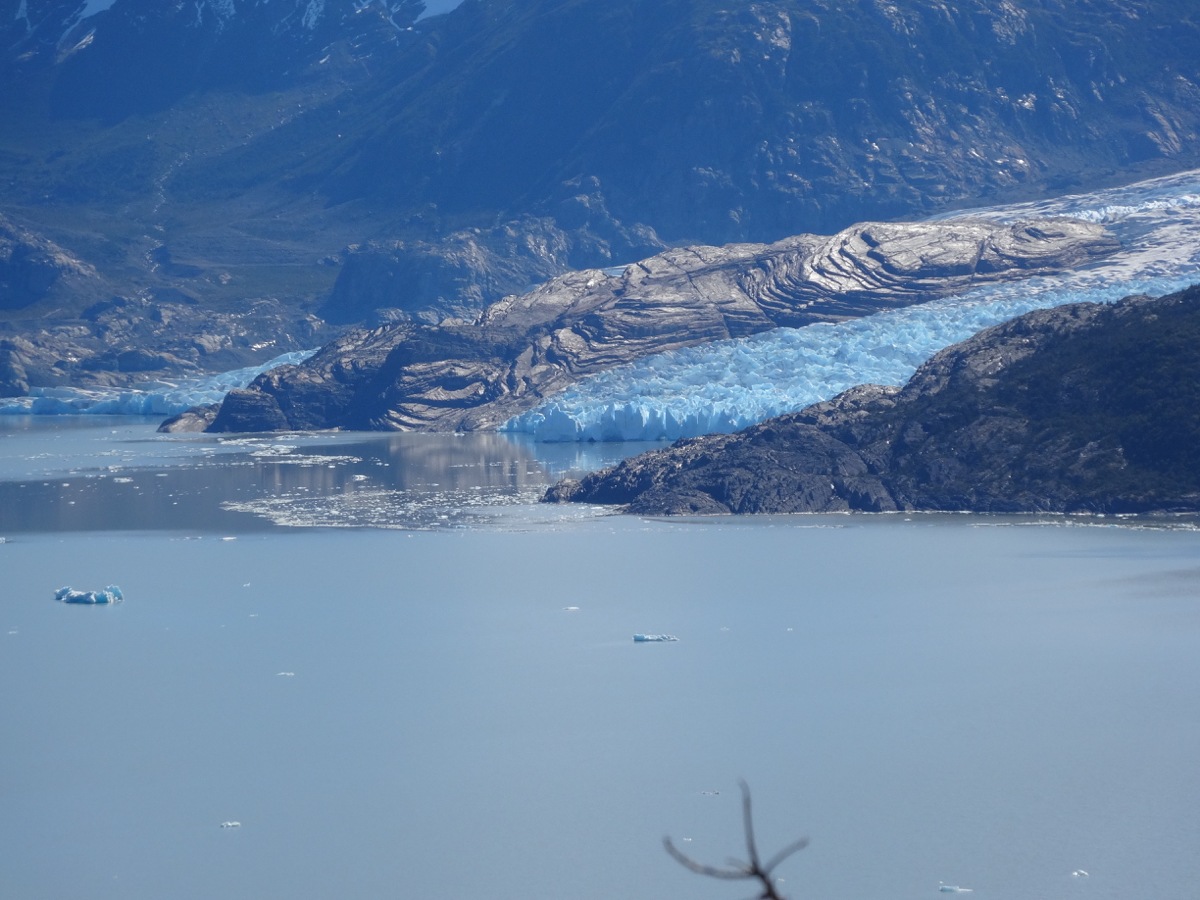
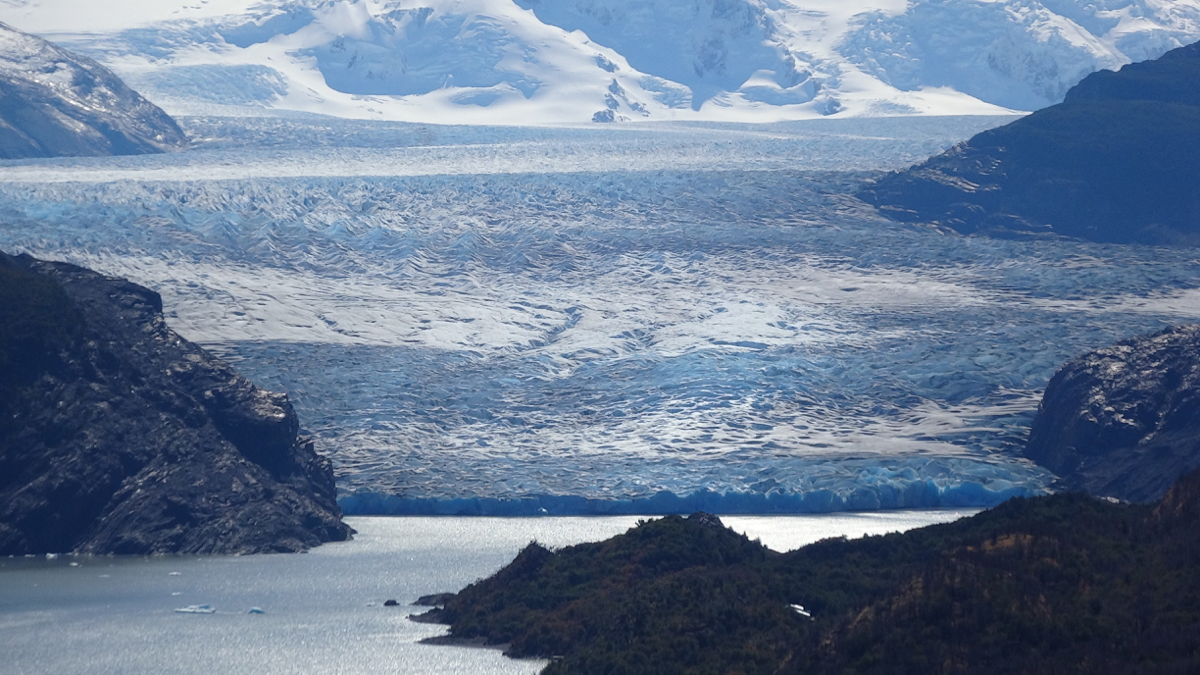

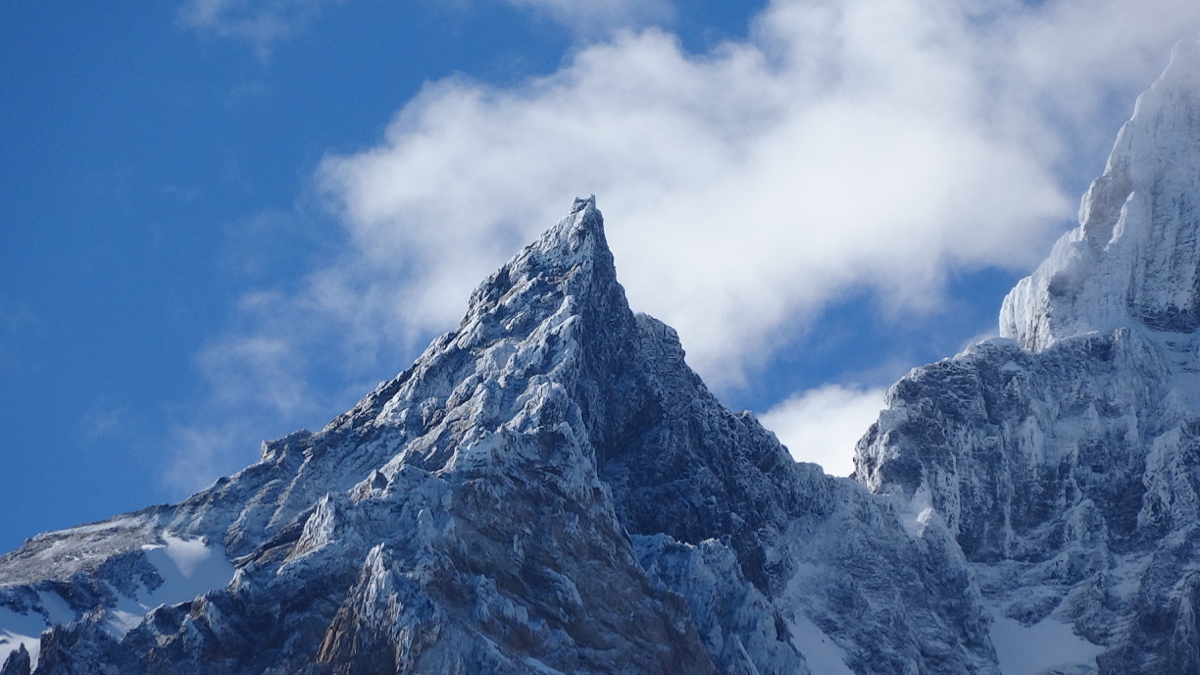
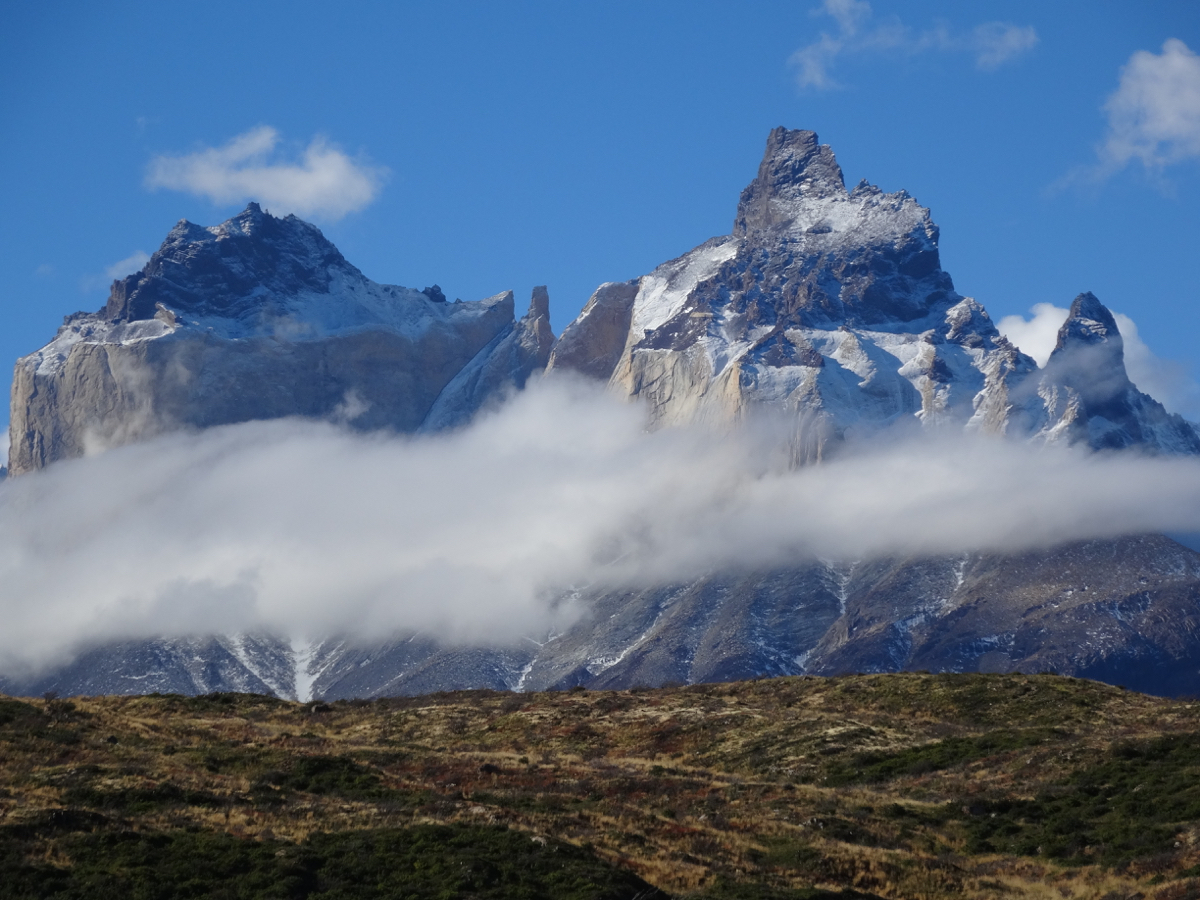


There are 2 comments. Add yours
Pingback: Argentina: Patagonia explored from El Chalten | Our journey around the world... June 5, 2015
[…] On our visit to the region in March 2014, we explored the Torres del Paine National Park in Chile and also spent time near the town of El Chalten, within the Los Glaciares National Park in Argentina. In this article we’ll focus on the Argentinian region of Patagonia, with the equally stunning Chilean region covered here. […]
Pingback: TRAIL Issue 15: Breathtaking Patagonia! | Our journey around the world... June 5, 2015
[…] far south of Chile. If you’d like to read more about our adventures in Patagonia, we cover Chile and Argentina in greater detail (and with many more beautiful images!) on our […]